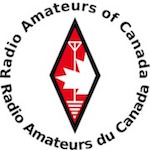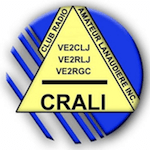Build a Vertical Dipole Antenna - My Homemade HF Tri-Bander
by Robert Ewers K9HOU
(Spring, Texas)

Me and my "ZR-3 style" homemade vertical dipole antenna
This article describes how to build a vertical dipole antenna for 20, 15 and 10 meters. It is only 8.3 feet tall and sports three active concentric ring elements at each end!
The idea for this project came to me when I watched a video presentation by Thomas H. Schiller (N6BT) on "QSO Today Virtual Event-2021". It's well worth watching.
(https://nextgenerationantennas.com/presentations-1)
I found a few pictures on line, which I copied and enlarged to study them. I also ordered Tom's book “Array of Light" which is filled with so much knowledge.
After exchanging a few emails with me, Tom added to my knowledge about this antenna.
With the pictures and some text about it, I decided that I could build one with some modifications.
My examination of the pictures of the original Force 12 ZR-3 showed the rings are only "end feed elements". One end is connected to the horizontal arm that is welded to the center post. There are smaller diameter arms opposite serving as nonconductive supports. They seem to have welded sockets at the center post and on the rings. The three different elements seemed at different levels. Force 12 had used hard tubing and welded pieces.
My Design Interpretation:
I started computing my interpretation of the ZR-3. The bottom PVC support would mount a 3/4 pipe adapter cemented in place to allow the vertical antenna assembly to just screw onto the pipe support that is driven into the ground, in my back yard.
I decided to put all three antenna ring elements in the same plane, top and bottom, like a fan dipole.
Materials:
- twelve feet of 1 inch square aluminum tubing for the main structure;
- two 33-inch vertical sections of 1 inch square aluminum tubing;
– one 8-inch-long 1 ¼ inch PVC SCH 40 pipe acting as insulator and support - between the two vertical sections
- one 36-inch length of 1 ¼ inch PVC SCH 40 pipe between the lower vertical section and the pipe support (driven in the ground);
- two 36-inch horizontal arms, of 1 inch square aluminum tubing, each mounted 4 inches above and below the central PVC pipe insulator.
Dimensions:
- Overall vertical structure is 100 inches tall
- 39 inches from bottom "ring element assembly" to ground;
- 58 inches between bottom and top "ring element assemblies";
- 3 inches of vertical element extend above the top "ring element assembly";
- the diameter of the 20-meter radiator is 56 inches;
Final size of elements:
10 Meters 97.2 inches
15 Meters 131.0 inches
20 Meters 163.75 inches
The top and bottom "ring element assemblies" are the same, only inverted of each other. All ring radiators are end-fed and are bent in the same direction.
Building the Vertical Dipole Antenna
The center vertical sections and main horizontal support arms are made of one-inch square aluminum tubing from a local hardware store.
One 8-inch long, 1 1/4 inch SCH 40 PVC pipe from the hardware store is used as an insulator and support between the top and bottom vertical elements of the dipole.
NOTE: Make sure that the top and bottom vertical elements of the dipole do not touch inside the 8-inch PVC insulator!
The bottom base vertical support PVC section is 36 inches long with a 3/4 pipe threaded adapter at the bottom end.
For a quick and easy mounting of an antenna, a 4-foot piece of 3/4 inch gas pipe (driven into the ground) supports the antenna. I used an elbow, 6-inch nipple and adapter to a lawn hose make a handle to help drive the pipe all the way to the ground. A lawn mower could pass over when the antenna was removed. No electrical connection with the antenna.
I heated and reformed the PVC to accept the square tubing in the round PVC tubing.
I used 1x1/8 aluminum flat stock to mount the horizontal supports to the vertical post. They are held in place by pop rivets to the post and sheet metal screws to the arms. That way I can remove the two ring element assemblies from the center post if the need arises.
The Short Vertical Antenna System
Two horizontal arms, made of one inch square aluminum tubing, act as main supports for the top and bottom tri-band ring element assemblies.
A 1/2-inch hole is drilled for each element through one side only of the horizontal arm mounts. A small hole for a sheet metal screw is drilled on the bottom of the square support tube, below the 1/2-inch hole, to secure the ring element in place and ensure conductivity.
I used 3003 1/2 OD, 3/8 inch ID, soft aluminum tubing that I bought from Aircraft Spruce & Specialty Co. They ship the tubing coiled. You can easily form the tubing in a ring by hand. I would add a couple of feet of 3/8 tubing to be used if you need to add a coil for tuning.
If you find you need to lengthen a ring radiator element, take a couple of inches of 3/8 inch OD to slide inside the end of a ring radiator element and secure with a couple of short sheet metal screws.
The other three horizontal insulator supports, for the top and bottom ring elements, are made of fiberglass rods cut from driveway markers that I bought from the hardware store.
The open ends of the ring elements are supported by short lengths of nonconductive fiberglass rods inserted into a 3/8 hole drilled in the opposite side of the square tubing arms, slightly offset from the 1/2-inch holes. The short rods are held in place by metal screws from the bottom of the square tubing. The open ends of the ring elements are prevented from slipping toward the square tubing with tie wrap cable ties on the rod. Keep the open ends of the ring elements at least an inch away from the horizontal arm support (which they must not touch, of course).
There is also a horizontal fiberglass rod to support the coax and "hairpin coil" near the center of the main vertical support structure (PVC). I drilled a hole in the PVC center insulator for the fiberglass rod and glued it in place.
The Ring Elements of the Vertical Dipole
The hard part was figuring how big to make the elements. For each element, a 1/4 wave length includes the element and the distance, from its attachment point on the horizontal arm, to the vertical support structure.
(The first time I had included the vertical support into the equations. Don't do that. It will come out with the elements too short by that amount!)
I heat-formed the PVC center and base. Drilled each side and installed sheet metal screws. Drilled and pop riveted a three-inch-long 1/8 x1 aluminum flat stock to each side of the vertical where arm is to attach. Those were drilled for sheet metal screws attachment.
The two vertical elements were assembled with the PVC center insulator. The bottom PVC support had a ¾ inch pipe adapter cemented in place. The vertical elements were drilled through for fiberglass support rods to pass through across the arm installation side and a single hole opposite the arm for that support rod.
The horizontal arms were drilled on one side for 1/2-inch hole where the ring elements would be inserted and a small hole in the bottom for sheet metal screw into each element. A small 3/8 inch hole on the opposite side, offset about 1 inch, for the support of the non-connected end with fiberglass rods. Arms were assembled with elements and carried to the back yard. Lower ring placed over the mount point and top was then attached to the vertical. Top and vertical was screwed onto the pipe in the ground then bottom arm is attached.
Assembling the Vertical Dipole Antenna
Cut PVC to length for the middle section and for base section. I cemented the 3/4 pipe threaded adapter to one end of the base PVC. Heat center PVC to reform the ends to except the 1-inch aluminum tubing about 3 inches into the post section vertical. Repeated for the bottom section. I drilled all four sides of each end of PVC and secured with sheet metal screws. Drill a hole through the center PVC insulator, near the center of it, for a fiberglass rod about 18 inches long to support coax and balun. Glue it in place.
With each arm assembled with its 3 elements and vertical assembly...
Place bottom ring element assembly on ground around antenna mount location.
Assemble top arm/ring with its vertical element + center PVC insulator + bottom vertical element + bottom PVC support
Screw this assembly to pipe ground mount. Raise and mount bottom arm/ring elements to the lower vertical element, just above the top of the bottom PVC support.
Feeding This Vertical Dipole Antenna
The center conductor of the coax is connected to the top vertical element. The coax shield is connected to the lower vertical element.
The coaxial feed line should lead away horizontally from the center of the vertical antenna, as much as possible.
Testing
Testing was conducted using a MFJ-249C Antenna analyzer, 20 feet back from the antenna.
My antenna analyzer showed impedance was way off. I added an impedance matching ‘hairpin’, a 2-inch, 8 turn coil, made with #14 wire, which is connected across the coax connections.
Adjust by compressing the coil turns tighter together or spreading them out. Then you can add or remove turns of the coil to match impedance.
Results
Connected to the radio. I compared with a fan dipole I had already up, using an antenna switch. I could swap from one to the other and compare received signal strengths. My homemade ZR-3 seemed to have a very slight improvement over my fan dipole. Satisfied, I removed the fan dipole.
I have made many contacts from the Houston, Texas, area with my homemade ZR-3 vertical antenna system - from Maine to Washington State Islands and some Canada and Chile contacts.
I'm glad I decided to build a vertical dipole antenna of this type. I do not have much space and this small antenna met my expectations.
=============
Credit goes to Tom THOMAS H SCHILLER N6BT - Founder of Force 12 Antennas and to DR.KENNETH A HIRSCHBERG K6HPX for their design that inspired me to build a copy of their vertical dipole antenna.
Return to Ham Radio Antennas Rave Accounts.
73 de VE2DPE
Claude Jollet
104-30 avenue des Berges,
Notre-Dame-des-Prairies, Québec, Canada J6E 1M9
QTH Locator: FN36gb
Disclosure
If
you make a purchase via a link on this site, I may receive a small
commission on the transaction, at no extra cost to you. Thank you!
(One word queries work best)
FOUND THIS
SITE
USEFUL?
VE2DPE
Is a member
in good standing
of



Also a proud member of an international community of solopreneurs
using SoloBuildIt!
(SBI!)
to promote my self-published eBooks
since 2005.
See my review
of this unique product for online businesses.
CQ CQ CQ
If you have a question, a comment or a topic you would like me to cover, please do not hesitate to ask here.








